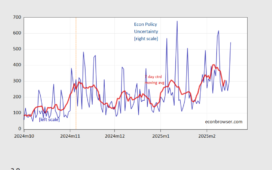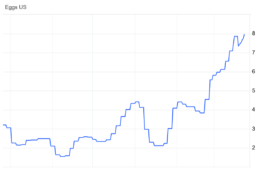Yves here. It seems intuitive that introducing robot into workplaces is meant not just to reduce labor expenditures, but also suppress wage rates. However, given the number of soi disant experts that try to contend that automation increases pay levels, it’s useful to have what should be obvious confirmed.
By Daisuke Adachi, Assistant Professor Aarhus University. Originally published at VoxEU
Industrial robots can have a transformative effect on employment and wages. This column studies how the rise of robot capital has influenced wage polarisation across different occupations in the US. It finds that the substitutability between robots and labour is heterogeneous across occupations, and particularly strong in production and material-moving jobs. Robotisation has led to slower wage growth for these occupations, and thus contributed to increasing wage polarisation. Potential policies to address these distributional effects include retraining programmes and tax policies to manage the pace of robot adoption without stifling innovation.
In recent years, the rapid integration of industrial robots into manufacturing processes has spurred significant debate among policymakers and economists. The discussion centres around the transformative effects of automation on employment and the distribution of wages, especially in economies with substantial industrial sectors like the US. This column examines how the rise of robot capital has influenced wage polarisation across different occupations from 1990 to 2007, shedding light on the mechanisms driving these changes.
The Growing Role of Robots in Industry
Industrial robots have revolutionised factory production over the past three decades, with the global robot market expanding at an annual rate of 12% (IFR 2021). These advancements, however, have not affected all workers uniformly. Concerns about the uneven distributional impacts of robotics have prompted policymakers to consider measures like taxing robot adoption to mitigate potential harms. Previous studies have examined the broader employment effects of robot penetration (e.g. Acemoglu and Restrepo 2020) and explored the implications of robot taxes (e.g. Humlum 2021). However, understanding the substitutability between robots and workers within specific occupations remains crucial for assessing the full impact of automation.
Research Overview
My research (Apache 2024) delves into the substitutability between robots and workers within various occupations, using a novel dataset on the cost of acquiring Japanese robots, referred to as the Japan Robot Shock (JRS). By developing a general equilibrium model of robot automation in a large open economy and constructing a model-implied optimal instrumental variable, I address the identification challenges associated with the correlation between automation shocks and the JRS.
My analysis reveals that the elasticity of substitution (EoS) between robots and labour is heterogeneous across occupations. In production and material-moving jobs, the elasticity of substitution is as high as 3, significantly higher than the elasticity between other capital goods and labour. This indicates that robots are much more substitutable for workers in these roles compared to substitution in other occupations. The findings suggest that robotisation has significantly contributed to wage polarisation in the US between 1990 and 2007.
Implications for Wage Distribution
The high elasticity of substitution in production-related occupations implies that robotisation has disproportionately affected workers in these fields, leading to slower wage growth compared to wage growth in other occupations. Specifically, robotisation has reduced the relative wages of workers in the middle deciles of the occupational wage distribution, contributing to a 6.4% increase in the 90-50 percentile wage ratio. This measure of wage inequality, popularised by Goos and Manning (2007) and Autor et al. (2008), highlights the growing divide between high-wage and middle-wage workers.
Comparative Analysis with Existing Literature
My study complements previous research by providing a detailed estimation of the within-occupation elasticity of substitution between robots and workers. Acemoglu and Restrepo (2020) find that regions with greater robot penetration experienced lower wage and employment growth. Humlum (2021) demonstrates significant heterogeneity in the real wage effects of robots across occupations. By focusing on the US labour market and using occupation-level robot cost data, my research provides a more nuanced understanding of the substitutability between robots and workers and its implications for the distribution of wages.
Policy Considerations
The findings underscore the need for targeted policy interventions to address the adverse distributional effects of automation. Potential measures could include retraining programmes for workers in highly vulnerable occupations, as well as tax policies that are designed to manage the pace of robot adoption without stifling innovation. Given the significant impact of robotisation on wage polarisation, policymakers must carefully consider how to balance the benefits of technological advancements with the need to ensure equitable labour market outcomes.
Conclusion
The integration of robots into industrial processes has had profound effects on the wage distribution in the US, particularly by exacerbating wage polarisation. My research highlights the importance of understanding the specific dynamics of robot-worker substitutability within occupations to fully grasp the broader economic implications of automation. As the debate on robot taxation and other policy measures continues, our findings provide valuable insights for crafting strategies that mitigate the negative impacts of automation on workers while fostering economic growth.
Authors’ note: The main research on which this column is based (Adachi 2024) first appeared as a Discussion Paper of the Research Institute of Economy, Trade and Industry (RIETI) of Japan.
See original post for references













